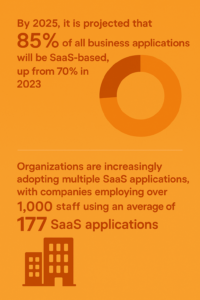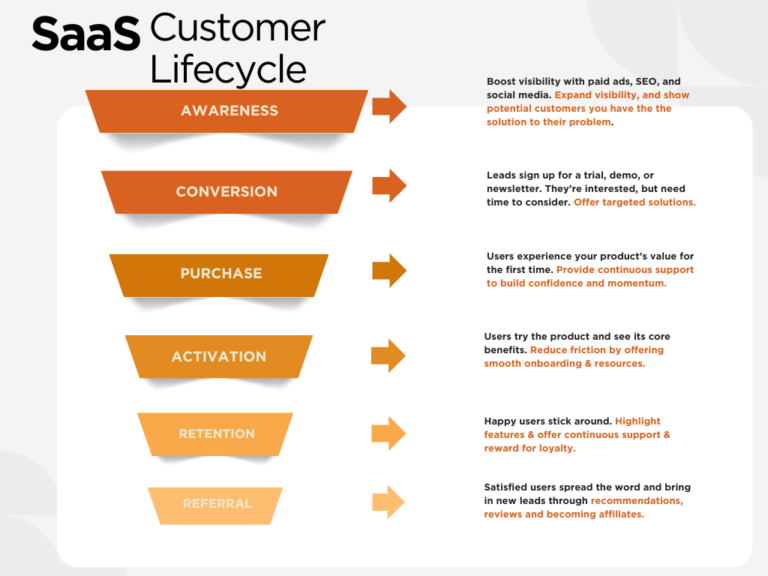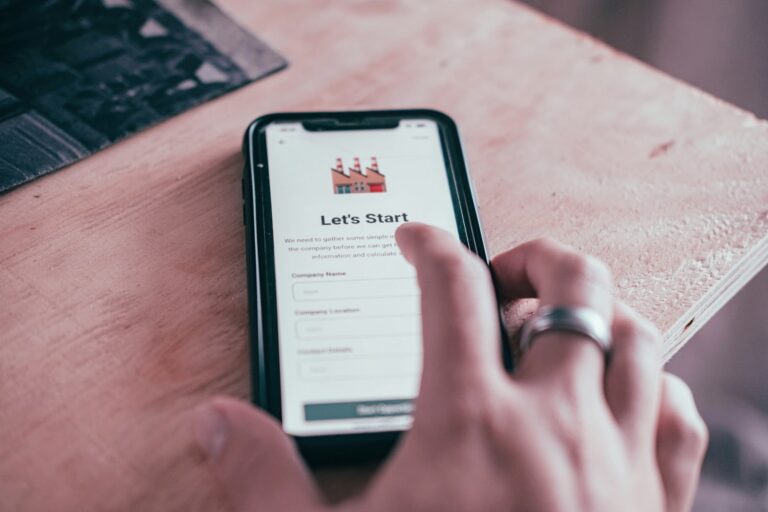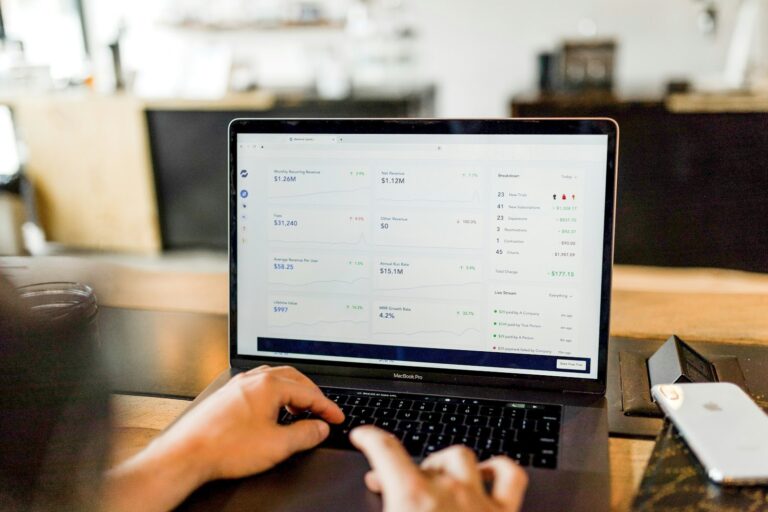The SaaS (software as a service) industry has experienced exponential growth in recent years. Projections show that 85% of business applications will be SaaS-based by the end of 2025, up from 70% in 2023. We wouldn’t even call it growth, we’d call it a full-fledged software revolution.
But with great SaaS power comes great marketing responsibility. The increasing demand for SaaS services has made the market fiercely competitive, challenging SaaS companies to focus on adopting a proactive strategy to cultivate lifetime value.
This guide will walk you through everything you need to know about optimising your SaaS marketing strategy in the age of the SaaS revolution.

SaaS Marketing vs. Traditional Marketing Methods
How is SaaS marketing different from traditional marketing models? As you probably already know, marketing as a whole can be challenging. However, SaaS marketing presents its own unique set of challenges and requires a tailored strategy.
In traditional marketing, value is created at the point of conversion, whether it’s a lead, a click-through, or a sale. In contrast, in the SaaS marketing industry, value is not created at the point of purchase, but over time.
SaaS can be more complex to market due to the necessity of ongoing value demonstration through updates, new features, and reliability.
Let’s run through the key differences between SaaS marketing and traditional marketing:
Sales cycle: Traditional marketing has a shorter sales cycle, focusing on initial conversions, whereas SaaS focuses on long-term customer relationship management.
Buying journey: The traditional customer journey generally ends with a purchase, whereas SaaS funnels carry on with onboarding, engagement, and customer retention strategies.
Financial model: Traditional sales revenue models often involve one-off payments, whereas SaaS models rely on subscription payments.
Engagement: Continuous engagement and nurturing are crucial for the SaaS sales cycle, often through follow-up calls, encouraging feedback, and offering features and add-ons.
Ongoing support: Emphasis on retention by providing an in-depth onboarding process, often with documentation and continuous support.

Marketing Strategies to Optimise Growth
Now that we’ve established the basics, here are my top tips for optimising your marketing efforts:
Inbound Marketing
Inbound marketing refers to attracting customers through content tailored to their needs and interests. Think of it like a magnet; it draws people in by offering something they already want or need.
SEO
SEO (search engine optimisation) is the bread and butter of inbound marketing. It’s crucial for visibility and reaching potential leads. This is especially relevant for attracting customers at the top of the sales funnel in the ‘awareness’ phase. It can, however, also be used at later stages of the buying journey through case studies, white papers, ROI calculators, and reviews to convert.
Consistency is key with SEO; consistently refining your SEO strategy by using the keywords and phrases relevant to your audience increases traffic, improves visibility, and builds brand loyalty over time.
SEO marketing involves:
Researching the relevant search phrases to rank for to increase your visibility on search engines.
Top-quality content marketing, in the form of blogs, eBooks, case studies, and whitepapers, allows you to promote your expertise.
Build links with your content to create effective topic clusters; for example, Google prefers high-quality, long-form content with internal links.
Technical SEO is also vital. Mobile friendliness, speed, and indexing contribute to increased engagement with your website.
Email Marketing
SaaS marketing centres around building trust and nurturing ongoing business-customer relationships. Features such as email list segmentation allow you to send relevant and personalised emails to potential customers, making it an excellent approach to nurturing relationships at any stage of the funnel.
The goal is to move users further down the funnel to conversion by providing valuable information about your SaaS product. If you’re looking to scale these efforts, partnering with an email marketing agency can help you execute campaigns that drive engagement and retention.
Let’s take a look at email marketing at each stage of the funnel:
The first step, at the top of the funnel, is to collect leads by creating a newsletter or by sending a welcome email or onboarding information when customers sign up for a free trial.
At this stage, potential customers may have signed up, but are not ready to buy yet. Encourage engagement and address customer pain points by sending case studies, webinar invitations, and product demos.
At the bottom of the funnel, the focus is on providing continuous value and reliability. Send feature benefits, pricing plans, or customer success stories as users near the end of their trial.
Post-purchase in the SaaS space is equally important, as the goal is to retain clients. Send existing customers suggestions for premium features, new launches, and encourage feedback.

Outbound Marketing
Outbound marketing is all about proactively engaging with your ideal customer and using a targeted approach to gather leads, then tailoring specific messaging to convince them to convert.
Paid Advertising
We could write a book on paid ads, but we’ll keep it short and sweet.
While inbound marketing is great for nurturing relationships, outbound strategies like paid advertising give you precision targeting, scalable lead generation, and immediate visibility, making them essential for gaining market share in a saturated market.
In the SaaS space, the buying journey is often lengthy, with decision-makers spending weeks or even months considering different solutions tailored to their specific needs.
Paid advertising helps you move the needle earlier in the journey. Even if someone’s not ready to buy just yet, you’re showing up early, building brand awareness, and getting on their radar.
Search Ads
Search engine marketing makes you visible to high-intent users actively seeking the solutions your software offers. Bidding on keywords that people may search to find your business ensures your ad shows at the top of the search results. For example, as a CRM software company, you may bid on the keywords ‘Best CRM for teams of 100+’.
Display Ads
Display ads are image/video-based adverts that are displayed on websites visited by your target audience. They are ideal for increasing visibility and retargeting users who have previously visited your website but have not signed up.
Social Media Marketing
Social media marketing can be a powerful tool for connecting with your ideal audience and building brand awareness. Social media platforms such as LinkedIn are particularly popular in the B2B space for their networking benefits, whilst Meta can help target specific demographics.
Native Ads
Native advertising is a subtle way to increase brand awareness through various marketing channels, such as sponsored social media posts, influencer marketing, and content recommendations. Native ads come across less salesy as they blend in with surrounding content, therefore potentially driving authentic interest in the product.
Retargeting Ads
As users interact with your brand multiple times before purchasing, retargeting can be a vital part of your digital marketing strategy. The goal of retargeting is to re-engage users who have previously interacted with your brand. In other words, it enables you to target an audience that has already shown interest in your brand but has not yet converted.
Important Metrics to Look Out For in SaaS Marketing
These key SaaS marketing metrics can help you understand customer behaviour, optimise marketing strategies, and operations to ensure long-term profitability.
Conversion rate is the percentage of users who have interacted with your brand by completing a desired action.
Customer acquisition cost (CAC) is used to determine the cost related to gaining a new customer.
Customer lifetime value (CLTV) is used to determine the net profit expected to be generated throughout the entire business-customer relationship.
Customer churn rate measures the rate at which customers discontinue a subscription or service.
Monthly recurring revenue (MRR) predicts income from subscription customers, which can be used to track growth and strategise.
Free trial conversion rate measures the effectiveness of converting free trial leads into paying customers, serving as an indicator of perceived value.
Customer satisfaction (CSAT) is a method for measuring overall customer satisfaction, which can be used to enhance service and foster brand loyalty.
Net promoter score (NPS) is measured by a survey of how likely customers are to recommend your business or service to others.
Lead scoring is an approach to determining the likelihood of each customer becoming a paying customer and then prioritising them. Ranking is based on previous interactions with website visits, feature usage during trials, email opens, and content downloads.

Key Takeaways
Whether you’re just getting started in the SaaS space or you’re looking to take your SaaS business to new heights, combining these marketing strategies can take you where you need to go.
Many SaaS companies use a hybrid marketing model, building organic demand through inbound marketing strategies while using outbound to accelerate high-impact outreach.
If you’ve got your inbound marketing strategies under wraps but need some expert advice on paid advertising in the SaaS revolution, hiring a SaaS paid ads agency can get you the results you need.
An agency can help you grow your revenue, target your ideal customers, and leverage data insights to attract quality leads tailored to your marketing budget. If that sounds like what you’re looking for, get in touch; we’d love to chat.